
By:
- Robert Monroe
Published Date
By:
- Robert Monroe
Share This:
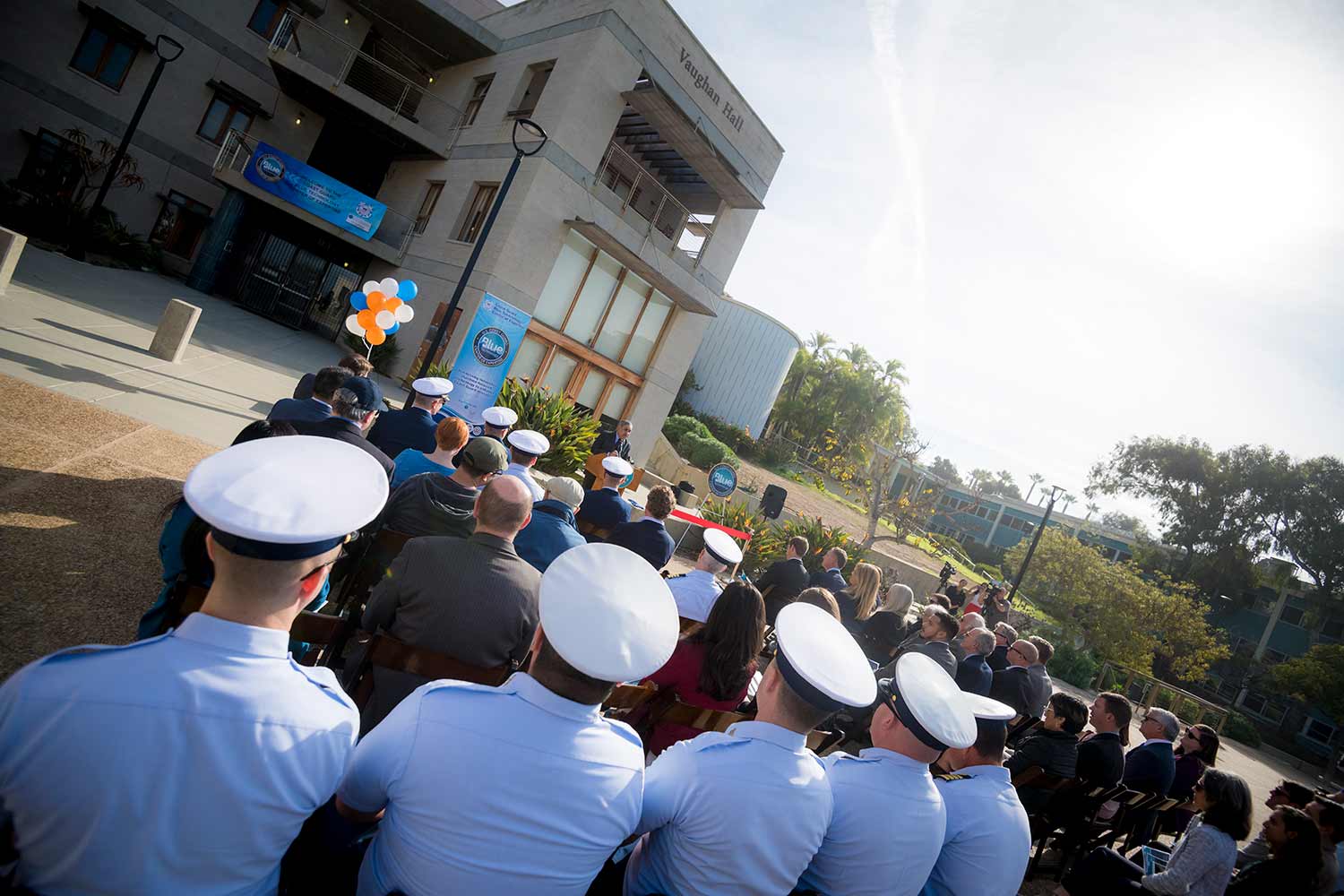
UC San Diego Chancellor Pradeep K. Khosla welcomes members of Congress and the U.S. Coast Guard at the launch of the Blue Technology Center of Expertise at Scripps Institution of Oceanography. Photos by Erik Jepsen/UC San Diego Publications
Coast Guard, Members of Congress Launch Center of Expertise at Scripps Oceanography
Military branch will leverage Scripps’ R&D capability to improve maritime awareness
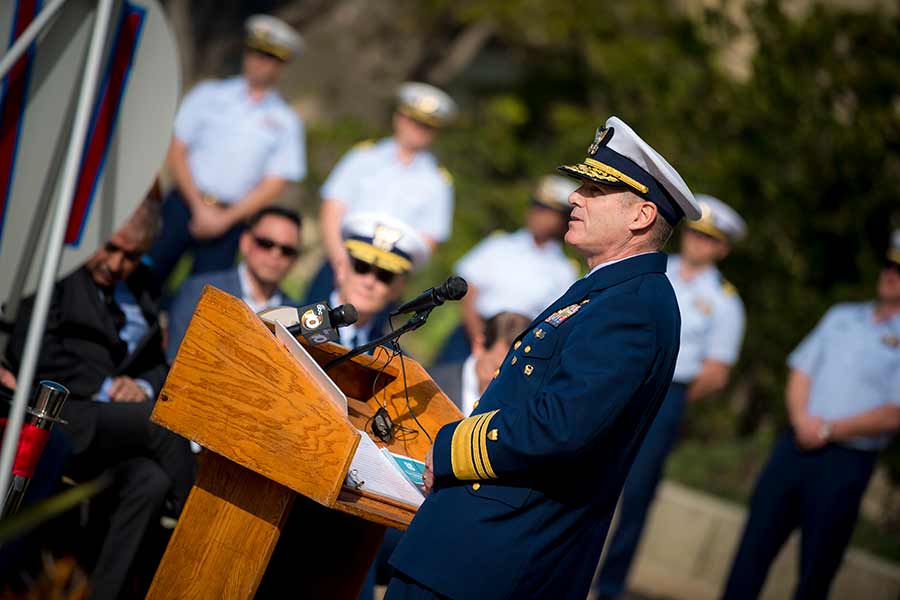
Coast Guard Vice Admiral Michael McAllister said the Center of Expertise will help meet the needs of a military branch that does not have a substantial research and development budget of its own.
U.S. Coast Guard officials and federal legislators christened a center at Scripps Institution of Oceanography at UC San Diego Friday that will accelerate the assimilation of Scripps Oceanography technology into Coast Guard operations.
Coast Guard Vice Admiral Michael McAllister said the Scripps “Blue Technology Center of Expertise” and other similar collaborations around the country are an answer for meeting the needs of a military branch that does not have an extensive budget for research and development. A range of buoys, gliders, drones, and other instruments developed at Scripps Oceanography could enhance search and rescue operations, stop illegal fishing, and speed containment of oil spills.
“We’re always trying to take the ‘search’ part out of search and rescue, using technology to find people in distress faster,” said McAllister. “Technology can improve our ability to save people’s lives by reducing the amount of searching we have to do ahead of time.”
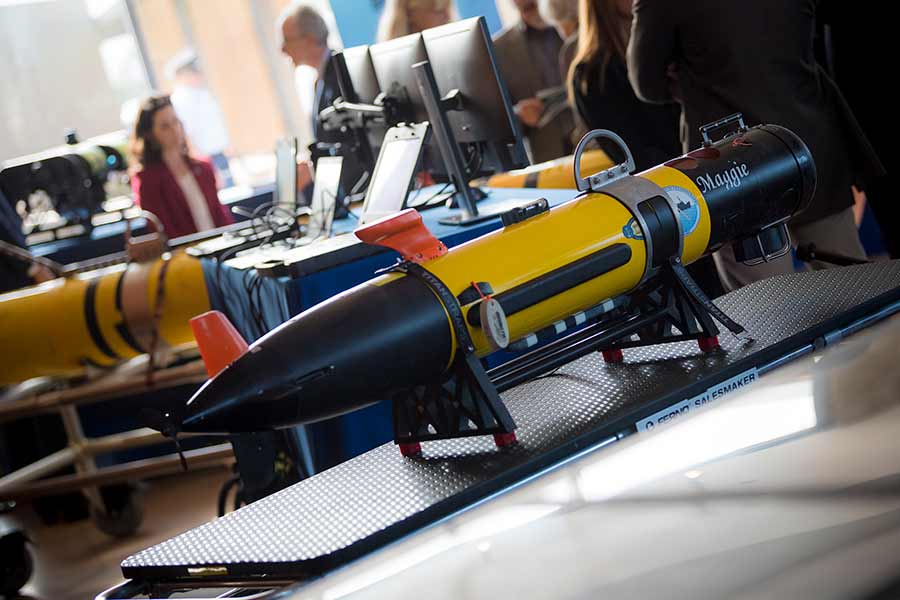
Scripps oceanographers showcased an array of surface and underwater gliders during the Center of Expertise launch, including “Maggie,” an underwater vehicle equipped with a magnetometer payload to detect seabed debris.
UC San Diego Chancellor Pradeep K. Khosla and U.S. Representatives John Garamendi (CA-03), Scott Peters (CA-50), and Mike Levin (CA-49) were among the other speakers at the ribbon-cutting at Scripps Oceanography’s Pawka Green. The center initially will consist of a pair of offices to be occupied by two Coast Guard officers later this year. They will work with Scripps scientists to adapt technology originally designed for research to more law enforcement-oriented functions. Additionally, the center is intended to provide a conduit between the Coast Guard and other regional leaders in blue technology.
“We have seen the value of partnerships, collaborations and sponsored research with and for agencies like the Office of Naval Research, USGS, and DARPA and the list goes on and on,” said Khosla. “These partnerships advance maritime R&D to provide demonstrations of emerging technologies that can be applied to full-scale operations, operations that the Coast Guard can leverage through this new center.”
Garamendi recalled at the podium that his introduction to the climate phenomenon El Niño, which can cause droughts or catastrophic floods in California, came from a Scripps Oceanography researcher in 1978, years before the term became commonly used.
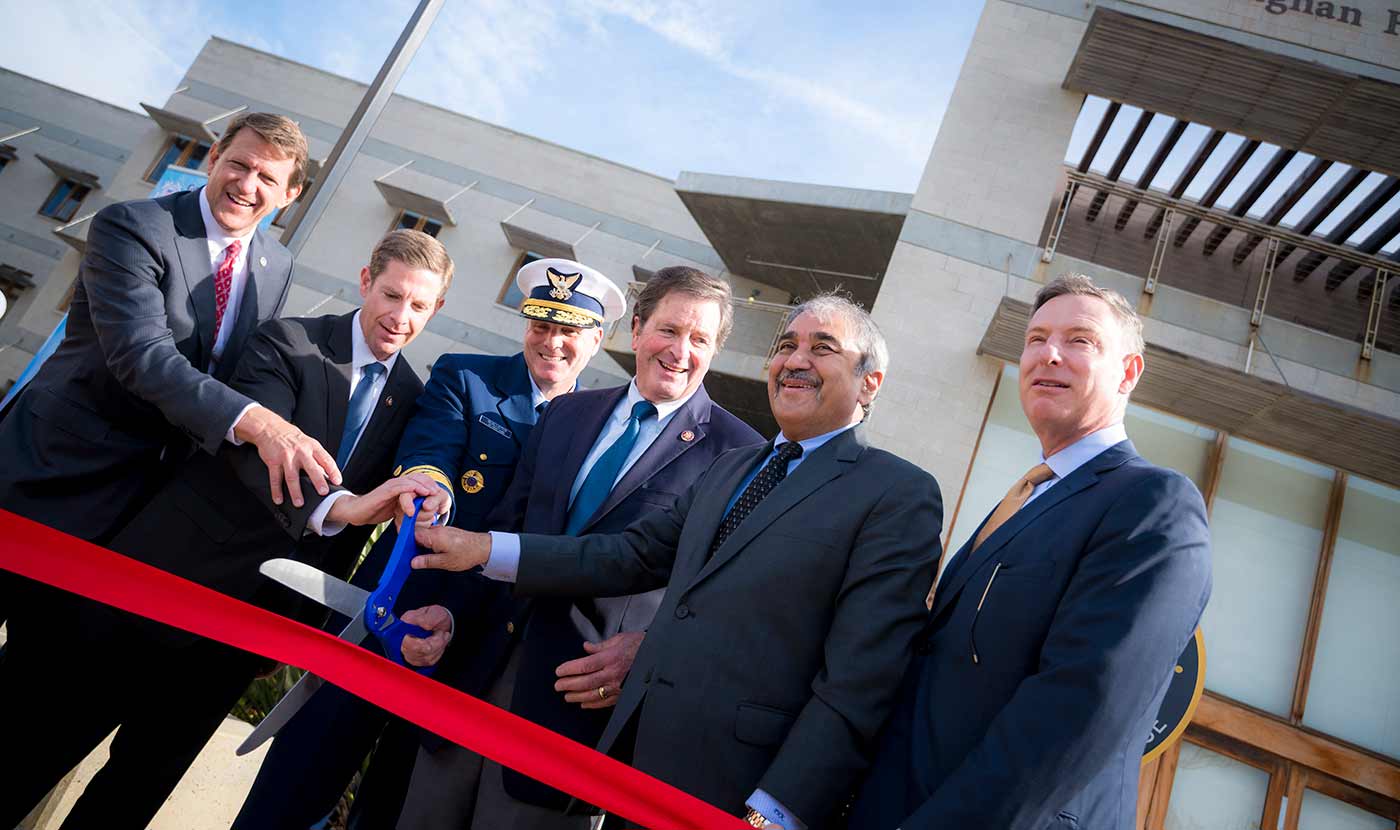
From left, Port of San Diego Commissioner Marshall Merrifield, Rep. Mike Levin, Coast Guard Vice Admiral Michael McAllister, Rep. John Garamendi, UC San Diego Chancellor Pradeep K. Khosla, and Rep. Scott Peters open the Blue Technology Center of Expertise.
“It was this institution that understood that what goes on out there in the blue water in the oceans has a dramatic effect on what happens at the shore,” Garamendi told an audience of nearly 100 people on site for the opening festivities. “It is Scripps over the years that has always provided that key research and understanding of what is happening in the climate of the world, in the oceans of the world and the way it affects our life.”
A portion of the technology the Coast Guard is expected to employ–such as high-resolution seafloor imaging and the photo analysis technique known as photogrammetry–has been developed by or a frequent tool of the research group led by Scripps oceanographer Eric Terrill. Terrill said it is gratifying for him to see such advancements used for the public good.
“It’s very satisfying to see your efforts to be used in ways beyond just a scientific publication,” he said, “by being able to apply that information to make lives safer and more efficient operations by the Coast Guard.”
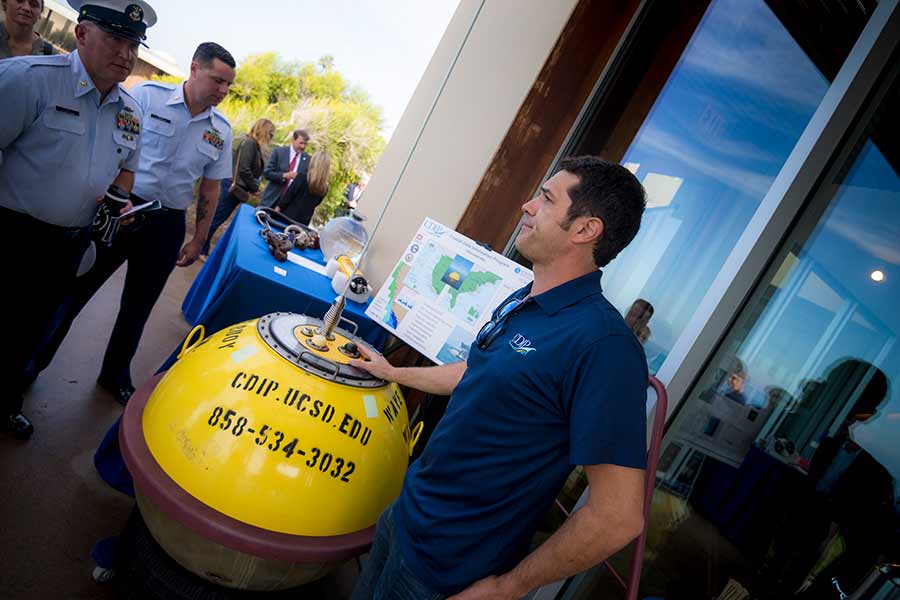
Coastal Data Information Project (CDIP) Program Manager James Behrens describes the workings of a CDIP buoy to Coast Guard officials.
The Coast Guard entered into the agreement with Scripps Oceanography to establish the Center of Expertise last fall. The military branch was authorized to establish the center by the 2018 Save Our Seas Act, which was spearheaded by Garamendi. Blue technology, as defined in the legislation, is any technology, system or platform designed for use above, on, or below the sea surface that can support or facilitate Coast Guard maritime domain awareness; search and rescue; emergency response; maritime law enforcement; marine inspections and investigations; or protection and conservation of the marine environment.
Scripps “is known for unmanned vehicles,” McAllister said. “As we think about all the illegal fishing that might be going on, particularly in the Pacific where we have 12 million miles of U.S. territory, and it’s very hard for us to patrol and enforce fisheries laws, using unmanned surface vehicles to monitor traffic to help us identify where there might be illegal activity going on, we can make sure we get assets there to enforce our laws.”
Share This:
You May Also Like
Stay in the Know
Keep up with all the latest from UC San Diego. Subscribe to the newsletter today.


